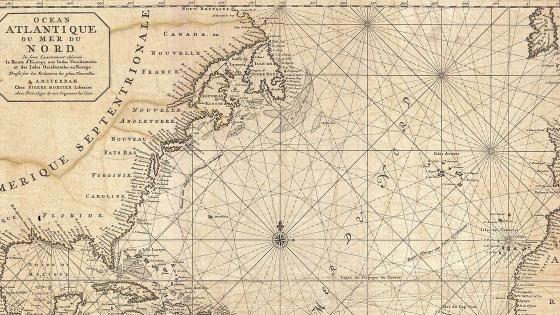“We enjoy at this hour an uninterrupted peace, while all the rest of Europe is either actually engaged in war, or is on the very brinks of it. Our trade is at a greater height than ever, while other countries have scarce any, thro’ their own incapacity, or the nature of their government.”
Daily Courant, 13 June 1734
In recent years, a rise in protectionist measures due to trade wars has contributed to a slowdown in global trade growth. The trade disruptions caused by the COVID-19 pandemic are likely to exacerbate this downward trend (Baldwin and Freeman 2020). We know that such diminished trade has adverse effects on consumers (Amiti et al. 2019, Fajgelbaum et al. 2020), but what is often overlooked is the threat that diminished trade poses to global peace.
The fact that trade can deter conflict is a common view in the literature but is also a controversial one (Barbieri 2002). Available empirical evidence is mixed and theoretical studies point to an ambiguous relationship between trade and war (Morelli and Sonno 2017).
We examine the relationship between trade and war from a historical perspective. In our study (Ahsan et al. 2019), we use over 250 years of data (1640–1896) and study a period in which intra-European conflict decreased dramatically.
While around one in five Europeans died due to conflict in the 15th century, about one in 100 did so in the 19th century (Figure 1).
Figure 1 Number of European conflicts per year, 1640-1896
Explanations for this shift towards peace have highlighted the durable political settlement brought about by the Congress of Vienna (Schroeder 1986); the diversion of conflict away from Europe due to the West’s comparative advantage in the use of violence after the industrial revolution (Findlay and O’Rourke 2009); and the positive effect of the Enlightenment via the spread of values of tolerance (Pinker 2011).
We propose an alternate explanation: access to Atlantic trade. Indeed, during the period we study, trade-flows between Europe and the New World intensified (Acemoglu et al. 2005). Did this trade play a role in lowering conflict in Europe?
Trade and conflict: an ambiguous relationship
In theory, the impact of Atlantic trade on intra-European conflict is ambiguous. On the one hand, European countries that engage in Atlantic trade will have more to lose (in terms of forgone trade) if conflict raises their overall trade costs. Further, by increasing real wages (and hence a worker’s outside option), Atlantic trade can increase the cost of raising an army (Dal Bo and Dal Bo 2011). Both of these channels will lower intra-European conflict.
On the other hand, when traded goods are substitutes, greater trade with the New World will reduce bilateral trade between European countries. This reduction in bilateral dependence will increase the likelihood of conflict (Martin et al. 2008).
Furthermore, much of our sample period overlaps with the age of mercantilism, a period in which conflict was used to establish commercial dominance over imperial trade routes (Findlay and O’Rourke 2009). Thus, greater scope for Atlantic trade can result in more conflict as European countries fight to establish imperial dominance. Ultimately, how Atlantic trade affected intra-European conflict is an empirical question.
Market integration as a proxy for historical trade
The lack of bilateral trade data between Europe and the New World during the period 1640–1896 has prevented scholars from exploring the effect of Atlantic trade on intra-European conflict. We overcome this data constraint by using the degree of wheat market integration between Europe and the New World as a proxy for trade. Our wheat price data allow us to construct a country- and year-level panel dataset of price pass-through between Europe and the New World and highlight the increased trade (Figure 2) between the European countries in our sample (Belgium, Britain, France, the Grand Duchy of Tuscany, the Habsburg Empire, the Netherlands, the Ottoman Empire, Poland, Portugal, Prussia, Spain, and Sweden) and the New World (the Thirteen Colonies/US, Peru, and Argentina) during this period.
Figure 2 Intra-European Conflict and Atlantic Trade, proxied by New World integration
Tropical cyclones and wind-based sailing time to measure trade costs
To empirically examine the trade–war relationship, we investigate whether each European country–pair’s trade with the New World affects their probability of conflict. We look at two weather-based shocks to cross-Atlantic trade costs: wind-based sailing time and tropical cyclones over the Atlantic Ocean. In a period in which ships were dependent on wind direction, the former was an exogenous determinant of travel time over the Atlantic Ocean (Pascali 2017). Similarly, sailing ships during our sample period were vulnerable to weather-induced shipwrecks (Trouet et al. 2016). Thus, tropical cyclones also were exogenous shocks to Atlantic trade costs.
We find that greater Atlantic trade did indeed have a pacifying effect in Europe. Our empirical estimates imply that the increase in Atlantic trade between the mid-17th century and the early 19th century lowered the probability of conflict onset by almost 15% from a baseline onset probability of 2%.
Channels
What mechanisms can explain this result? First, greater Atlantic trade raises the opportunity cost of intra-European conflict. Second, given that Europe was relatively labour abundant, trade with the New World would increase European wages and hence increase the cost of raising an army. All else equal, both channels will result in Atlantic trade lowering intra-European conflict.
Consistent with both hypotheses, we find that countries with greater Atlantic trade experienced an average increase in wages and that greater Atlantic trade lowered a country’s army and navy sizes. Our results were not driven by other factors that may be associated with lower conflict, such as positive agricultural productivity shocks, fewer famines, higher tax revenues, alliances through intermarriage, and institutional quality.
While our results suggest that Atlantic trade played a role in lowering intra-European conflict, rather than creating the basis for a Kantian ‘perpetual peace’ across the globe, we find that Atlantic trade had negative repercussions for societies outside Europe. In fact, we find evidence of conflict displacement to Africa and Asia, where European powers fought to expand their empires.
Nonetheless, this episode of history serves as a reminder that as the world proceeds in a more protectionist direction, it is not just consumer and producer welfare that will be impacted. The additional threat that protectionism and diminished trade may pose to peace should not be overlooked.
References
Acemoglu, D, S Johnson and J Robinson (2005), “The rise of Europe: Atlantic trade, institutional change, and economic growth”, American Economic Review 95(3): 546–79.
Ahsan, R, L Panza and Y Song (2019), “Atlantic trade and the decline of conflict in Europe”, CEPR DP14206.
Amiti, M, S J Redding and D E Weinstein (2019), “The impact of the 2018 tariffs on prices and welfare”, Journal of Economic Perspectives 33(4): 187–210.
Baldwin, R, and R Freeman (2020), “Supply chain contagion waves: Thinking ahead on manufacturing ‘contagion and reinfection’ from the COVID concussion”, VoxEU.org, April 1.
Barbieri, K (2002), The liberal illusion: Does trade promote peace?, Ann Arbor: University of Michigan Press.
Dal Bo, E, and P Dal Bo (2011), “Workers, warriors and criminals: Social conflict in general equilibrium”, Journal of the European Economic Association 9(4):646–77.
Fajgelbaum, P D, P K Goldberg, P J Kennedy and A K Khandelwal (2020), “The return to protectionism”, The Quarterly Journal of Economics 135(1): 1–55.
Findlay, R, and K H O’Rourke (2009), Power and plenty: Trade, war, and the world economy in the second millennium, Princeton: Princeton University Press.
Martin, P, T Mayer and M Thoenig (2008), “Make trade not war?”, The Review of Economic Studies 75(3): 865–900.
Morelli, M, and T Sonno (2017), “On economic interdependence and war”, Journal of Economic Literature 55(3): 1084–97.
Pascali, L (2017), “The wind of change: Maritime technology, trade, and economic development”, American Economic Review 107(9): 2821–54.
Pinker, S (2011), The better angels of our nature: The decline of violence in history and its causes, London: Penguin.
Schroeder, P W (1986), “The 19th-century international system: Changes in the structure”, World Politics 39(1): 1–26.
Trouet, V, G Harley and M Dominguez-Delmas (2016), “Shipwreck rates reveal Caribbean tropical cyclone response to past radiative forcing”, PNAS 113(12): 3169–74.





